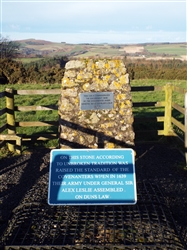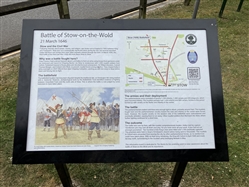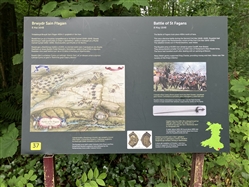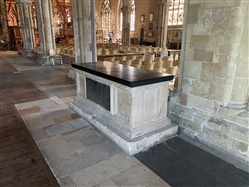Conyers, Sir John 1587-1664
Title:
Knight
Military Rank:
Lieutenant General
First Name:
John
Last Name:
Conyers
Memorial Type:
Memorial - Funerary
Does the monument still exist?
Yes
Installation Date:
1660s
Inscription:
P. M. S.
Juxta hujus Porticus medium
Dormiunt usque ad resur'oem
D'na Francisca Conyers, pietatis exemplar.
Obiit 24 die Jan. 1635, et juxta illam
Dn's Joh'ns Conyers de Hordon, Bar.
Ejus maritus, probitatis eximise.
Obiit 4 die Dec. 1664, in quor. me'oriam
D'ns Christoph's Conyers, filius et hseres
Non Exec, reverenter et voluntarie
hunc mar'oem extruxit qui suum
die 16 et sepultus est.
Wm. Stanton fecit Londini '.
Allegiance:
Royalist
Condition:
Average
Condition Description:
Assessed from recent photograph
Memorial Notes:
“In the South aile, on a handsome mural tablet of grey marble “
Robert Surtees The History and Antiquities of the County Palatine of Durham, Compiled from Original Records Preserved in Public Repositories and Private Collections: Hartlepool Section. Sunderland, Hills & Company, 1910, https://ia600202.us.archive.org/25/items/historyantiquiti03surt/historyantiquiti03surt.pdf
Above the memorial was a close helmet funerary helm, “The Church is filled with carved seats of Charles I’s time. A copy of the Solemn League and Covenant, and an old helmet of one of the Conyers, are preserved in the vestry.” (John Murray, 1864 Handbook for Travellers in Durham and Northumberland, p.119)
From about 1603 John Conyers pursued a military career in the Netherlands. 1606 married Frances Groves of York. 1620s in the Dutch service, subsequently as lieutenant-colonel to Sir John Borlase in the Danish forces. Created a baronet in 1628. In 1629 he was at Delft and in 1635 at Nijmegen, where he advised Edward second viscount Conway. 1639 Conyers was settled at Breda, returning in June 1640 as governor of Berwick upon Tweed during the Bishops’ Wars. Returned to York in Novembers 1640. February 1642 replaced Byron as lieutenant of the Tower of London but resigned in August 1643, declined service in the parliamentary army and left to attend his affairs in the Netherlands. In September 1645 the Scots army was quartered on his estates, and parliament sequestered his estate. He offered parliament £100 as a pledge of goodwill, which was accepted only after he promised to lend a further £200. In August 1648 his composition fine was set at £651, and on 8 September following he was cleared of delinquency. After the Restoration, in November 1661, he began service as a deputy lieutenant for co. Durham. (DNB)
Memorial Address:
St. Mary the Virgin Church, Easington, Peterlee SR8 3AR
County:
Durham
Country:
England
Location within building:
South Aisle
Geoloation:
54.78475661913548, -1.35746465767109





